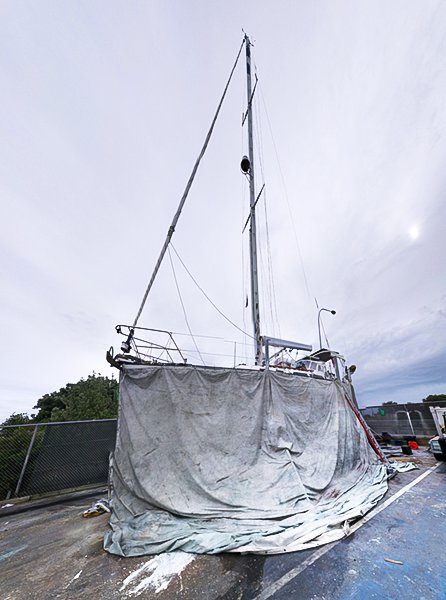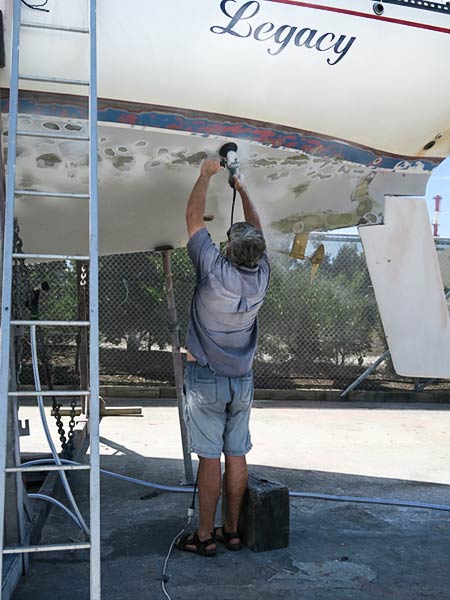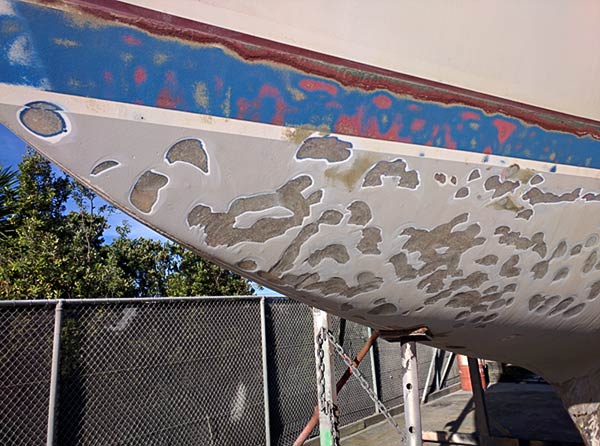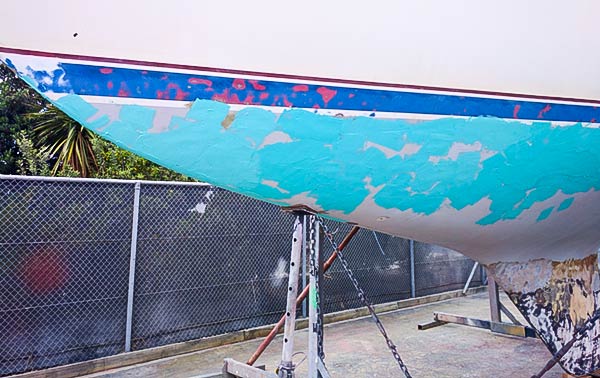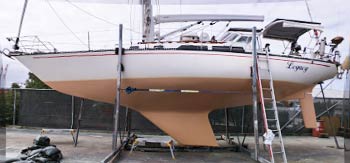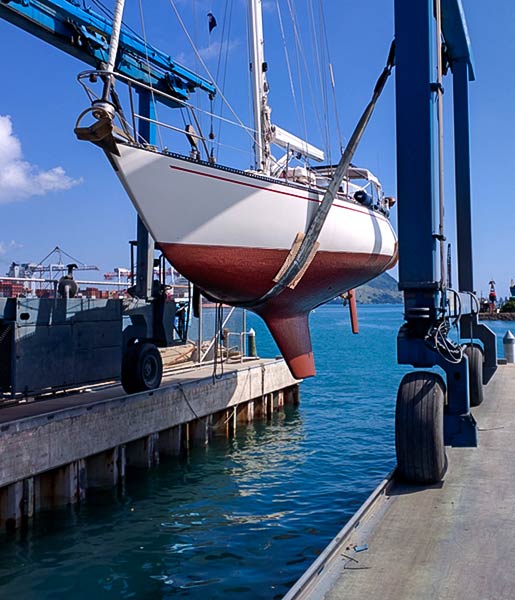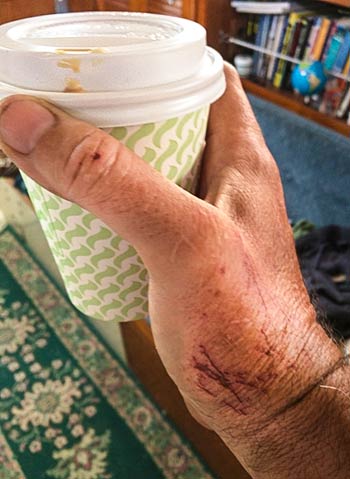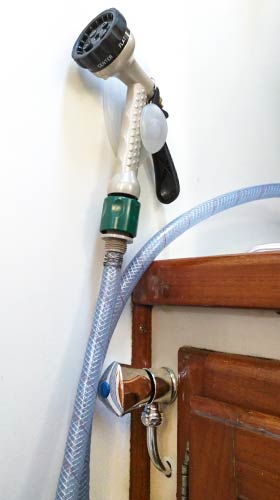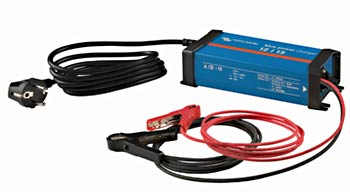January 31, 2016
Legacy came out of the water last Wednesday for a bottom job.
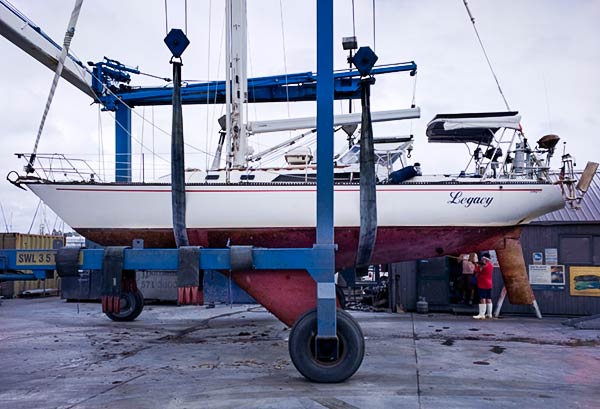
And by Wednesday night, she was wearing a dress…
Actually, she was tented off in preparation for water and garnet blasting to remove all the old coats of bottom paint. The paint had become too thick and was falling off the hull in pretty good size patches. We also had quite a crop of osmotic blisters.
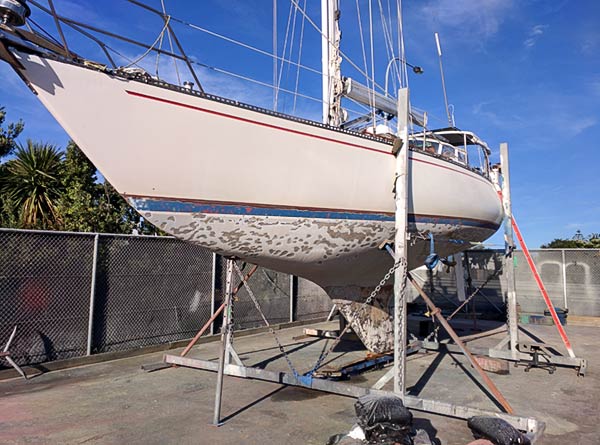
We’ve been grinding the blisters away for two days now and are almost done with that phase.
When I’m done with this, I swear, I’m never lifting my arms above my head again (not that I’ll be able to!).
What the blisters lack in depth (they’re pretty shallow), they make up for in quantity!
Next steps: filling, barrier coat, and bottom paint. I’m also hoping to wax the topsides (I know, I’m a dreamer!). -Rich
Update, February 2, 2016…
We thought the boat would look good with Play-Doh applied liberally to the bottom.
Actually, it’s Jotafair by Jotun. It’s a two-part epoxy fairing compound. We put about three and a half liters in the ground out spaces. Tomorrow, we’ll sand about three quarters of that off!
It’s nice to be done with our deconstructionist period and moving in the right direction. (Plus, I really like the color of the filler. I wonder if it tastes good?)
Update, February 4, 2015
Red, Dirty Red, Gray, Gray with Acne, Gray with Play-Doh, now Barbie-with-a-Bad-Tan Skin Tone.
That’s the first coats of epoxy barrier. If the rain holds off tomorrow, maybe she’ll be ready for bottom paint after yet another NZ holiday!
Update, February 12, 2016
The work is done and we’re back in the water! It took 6 days longer than planned, mostly due to the frequent NZ national holidays and the even more frequent bad weather, but it’s done and I’m so happy with the results.
The new bottom paint is Hempel NCT 8190M. It’s an ablative paint that’s mostly used on big ships. It uses some very interesting new technology. They have guaranteed it for three years. We’ll let you know how it does.
We did all this work at the Bridge Marina Travel Lift. This is our third time hauling out here and we love it. Bruce, Brian, Merrick and Antonio are terrific – professional, helpful, friendly and very knowledgeable. They’ve solved several of Legacy’s long-standing problems over the years of hauling out here (Maddox Anodes, Rudder Bushings). I really think that it’s crazy to do boat work anywhere else in NZ.
It also has the advantage of being in one of the best spots on the North Island. Both Tauranga and Mt. Maunganui, the nearby towns, are wonderful. We are always finding new and amazing places to eat and shop. It’s heaven for boat parts as well. Example: if you need a fastener, there are at least four fastener stores on one street alone, one stocking nothing but stainless. Again, it’d be crazy to go anywhere else! -Rich

